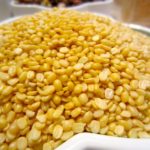Every year, from August to October in the lunar calendar, ba khía crabs emerge from their underground burrows beneath the duốc and mắm tree roots, which are flooded during this time. This phenomenon is known as the “season of the ba khía.” During these months, families catch these crabs in abundance to make mắm, a fermented crab paste, to be enjoyed with hot rice on rainy days. However, not everyone knows the secret to selecting the meatiest and tastiest ba khía crabs for cooking.
In this article, we will not only uncover the origins of the ba khía crab but also reveal tips for choosing the meatier variety.
1 What is Ba Khía?
Ba khía is a species of crab with large pincers, belonging to the majid crab family. It is also known as the three-lined crab due to the three distinctive lines on its back. These crabs are small in size but pack a lot of meat. They are commonly found in the brackish and saltwater areas of the Mekong Delta, particularly from Cần Thơ to Sóc Trăng. The most renowned ba khía crabs originate from Rạch Gốc in Cà Mau province, known for their generous amount of meat and firm texture.
 Ba khía, or the three-lined crab, belongs to the majid crab family and is known for its distinctive three lines on its back.
Ba khía, or the three-lined crab, belongs to the majid crab family and is known for its distinctive three lines on its back.
Traditionally, ba khía crabs were used solely for making mắm, a specialty of the Mekong Delta region. However, with creative culinary innovations, these crabs are now enjoyed in various raw dishes as well.
Preparing mắm ba khía is quite simple. It involves removing the shell, discarding the lungs, rinsing the crabs in hot water, and then mixing the crabmeat with spices such as chili, lime, and sugar to enhance the flavor.
2 Tips for Choosing the Best Ba Khía Crabs
Selecting Crabs for Fermenting
When choosing crabs for fermenting, opt for larger crabs with firm meat. It’s crucial to get the salinity right when fermenting ba khía crabs. Insufficient salt will result in a foul odor, while too much salt will cause the crabs to lose their meat.
The preference for male or female crabs varies by region. Female crabs tend to have delicious roe, but they take longer to ferment and are more prone to losing their meat. On the other hand, male crabs retain their meat better during the fermentation process.
 Choose larger crabs with firm meat for fermenting.
Choose larger crabs with firm meat for fermenting.
Selecting Fresh Crabs
When buying fresh ba khía crabs, test the fullness of the claws—if they feel heavy and full, the crab is likely to be meaty and of good quality. Avoid overly large crabs, as smaller crabs tend to have more of the desirable red roe, resulting in fatter, softer shells and firmer meat. The absolute best crabs to choose are those carrying eggs, as they have a rich, nutty flavor.
The Best Time to Enjoy Ba Khía Crabs
The peak season for ba khía crabs is during the rainy season, from August to October in the lunar calendar. This is the ideal time to purchase these crabs and prepare them in a variety of ways, whether you prefer them raw, fermented, stir-fried, steamed, or any other way you can imagine.
If you ever find yourself in the Mekong Delta region, particularly in Cà Mau, during this season, make sure to sample the local ba khía crabs, renowned for their exceptionally firm and flavorful meat.
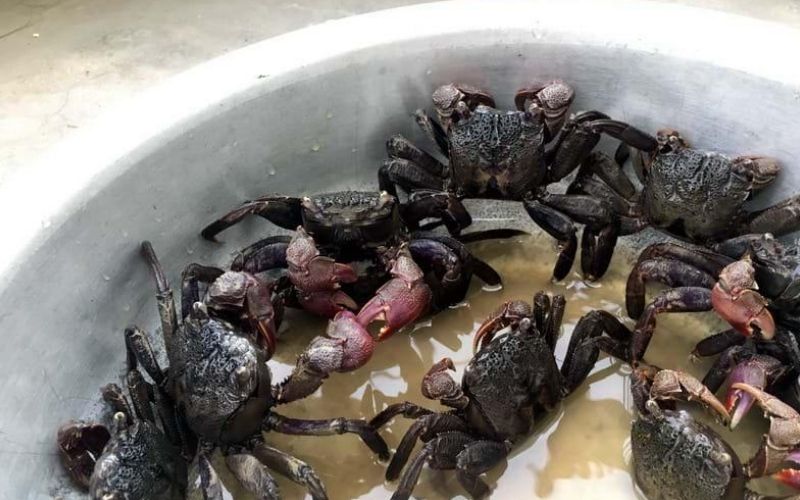 The rainy season, from August to October in the lunar calendar, is the best time to enjoy ba khía crabs.
The rainy season, from August to October in the lunar calendar, is the best time to enjoy ba khía crabs.
3 How to Clean and Prepare Fresh Ba Khía Crabs
Before cooking with fresh ba khía crabs, place them in a large bucket and cover them with water. Use a stick to stir them vigorously to remove any dirt from their shells. If they try to escape the bucket, you can stun them by soaking them in ice-cold water.
Next, use a sharp knife to pierce the crabs’ gills to ensure they are dead. Rinse them again with cold water and drain them in a colander.
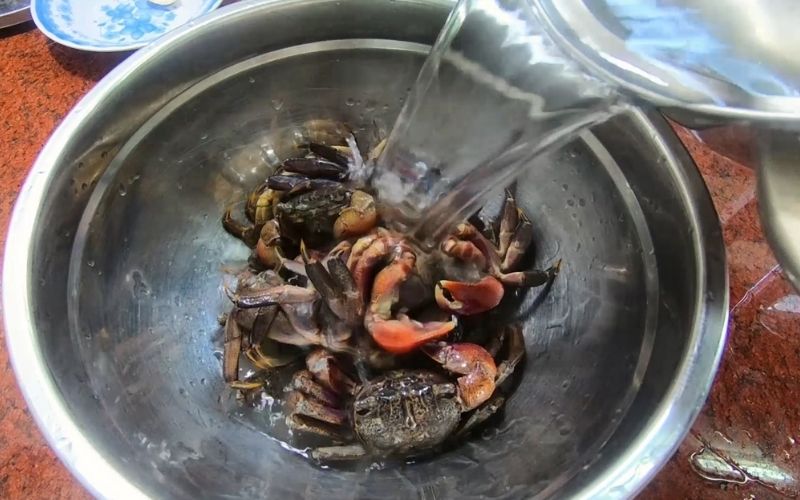 Cleaning and preparing fresh ba khía crabs involves a few simple steps.
Cleaning and preparing fresh ba khía crabs involves a few simple steps.
Then, remove the shells and rinse the crabs again with water. For larger crabs, it’s best to cut them in half and rinse them once more before lightly boiling and seasoning them according to your chosen recipe. Selecting crabs with more meat will undoubtedly enhance the flavor of your dish.
4 Delicious Dishes Featuring Ba Khía Crabs
Green Papaya Salad with Ba Khía Crabs
This salad, with its distinctive Thai flavors, is a true delight for the senses. The crisp green papaya provides a satisfying crunch, while the fermented ba khía crabs add a salty kick, all tied together with the spicy heat of garlic and chili.
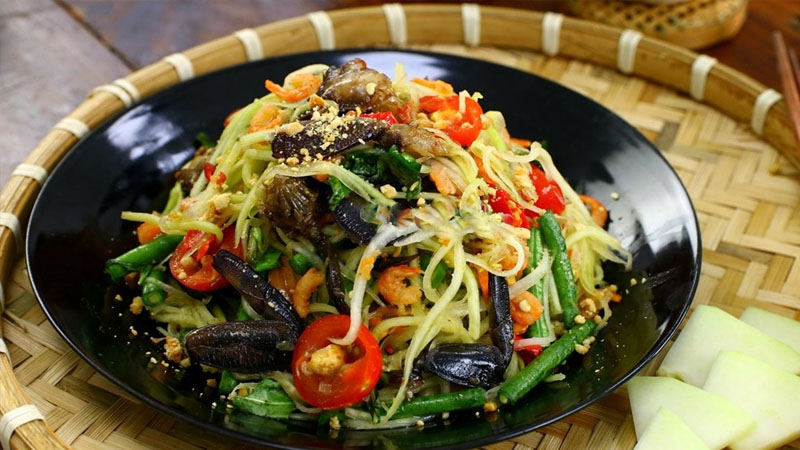 Green Papaya Salad with Ba Khía Crabs is a flavorful dish with Thai influences.
Green Papaya Salad with Ba Khía Crabs is a flavorful dish with Thai influences.
Mắm Ba Khía
Mắm ba khía is a staple in the Mekong Delta region, typically enjoyed with hot rice. The fermented crabs have a rich, savory flavor, and the addition of chili provides a pleasant kick that keeps you coming back for more.
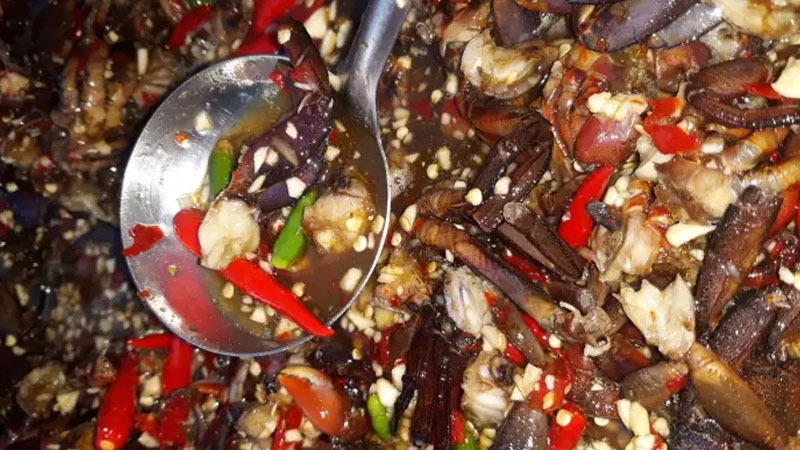 Mắm Ba Khía, a fermented crab delicacy, is best enjoyed with hot rice.
Mắm Ba Khía, a fermented crab delicacy, is best enjoyed with hot rice.
Spicy and Sour Fermented Ba Khía Crabs
This dish is a flavor explosion, offering a perfect balance of sour, spicy, and salty notes. It’s an absolute must-try!
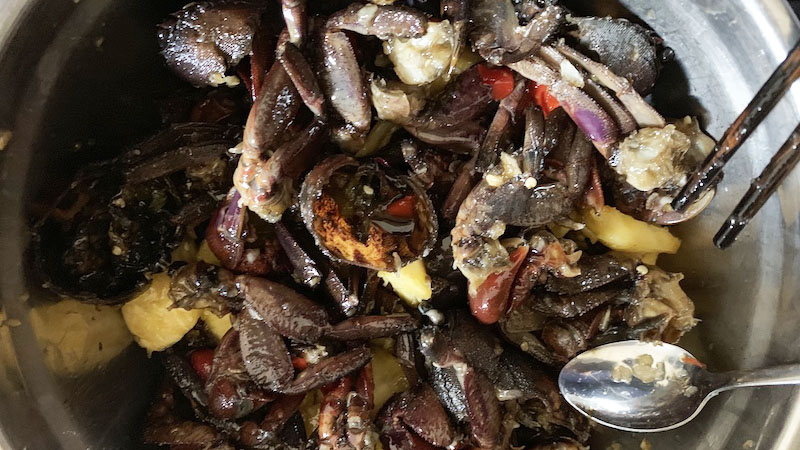 Spicy and Sour Fermented Ba Khía Crabs is a flavor explosion.
Spicy and Sour Fermented Ba Khía Crabs is a flavor explosion.
We hope that these insights and tips will empower home cooks to select the freshest and meatiest ba khía crabs at the market. If you ever find yourself in the Mekong Delta region, be sure to sample the local ba khía specialties.




























